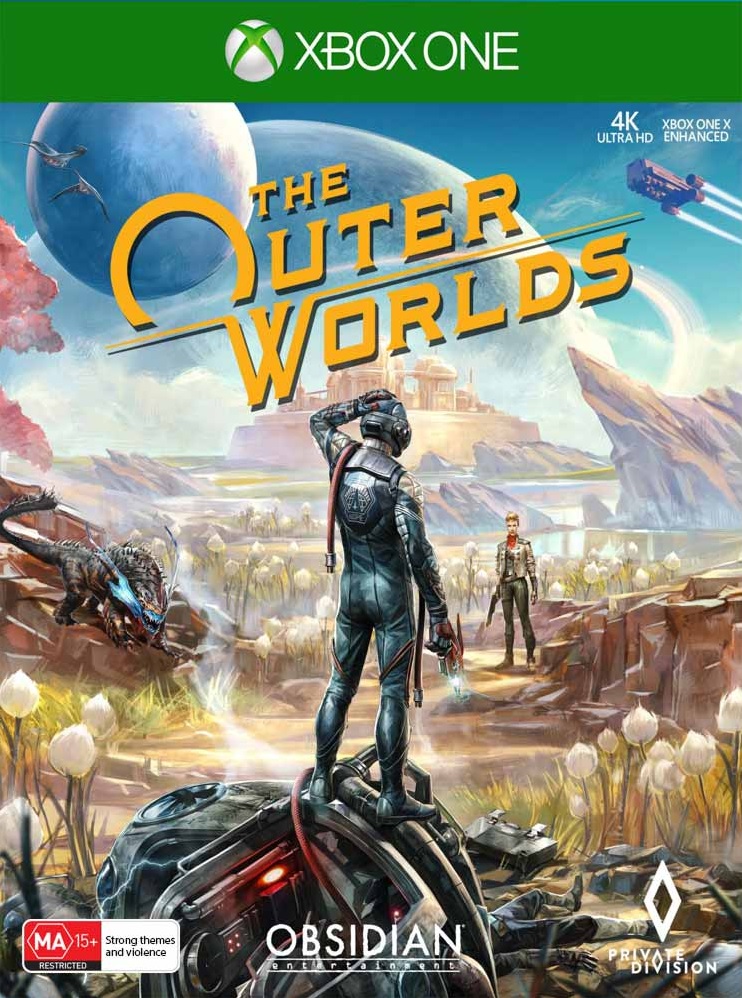The Outer Worlds
Developer: Obsidian Entertainment
Publisher: Private Division
Platforms: Xbox One (Reviewed), PlayStation 4, Switch, PC
Release Date: Available Now
Price: $59.99 USD – Available Here $99.95 AUD – Available Here
Overview
In recent years there have been great success stories when it comes to Western RPGs but one specific sub-genre has suffered a bit, especially after a certain missteps were made with a beloved franchise. That’s why when Obsidian Entertainment, a developer well known for crafting excellent storylines, announced The Outer Worlds as a first person RPG set in space, hopes were high. So now that The Outer Worlds has been released does it manage to reach the heights that fans were hoping for?
Story
The future for humanity lies beyond the stars and that is what you, along with thousands of other best and brightest, were promised when signing up to board and enter cryo-sleep aboard a colony ship by the name of The Hope destined for the Halcyon system. Things have gone horribly wrong however as a strange scientist by the name of Phineas Welles has defrosted the player and informed them that not only has The Hope been considered a lost vessel that has been adrift for so long that many people simply believe it as a myth, but that the system is falling apart at the hands of The Board.
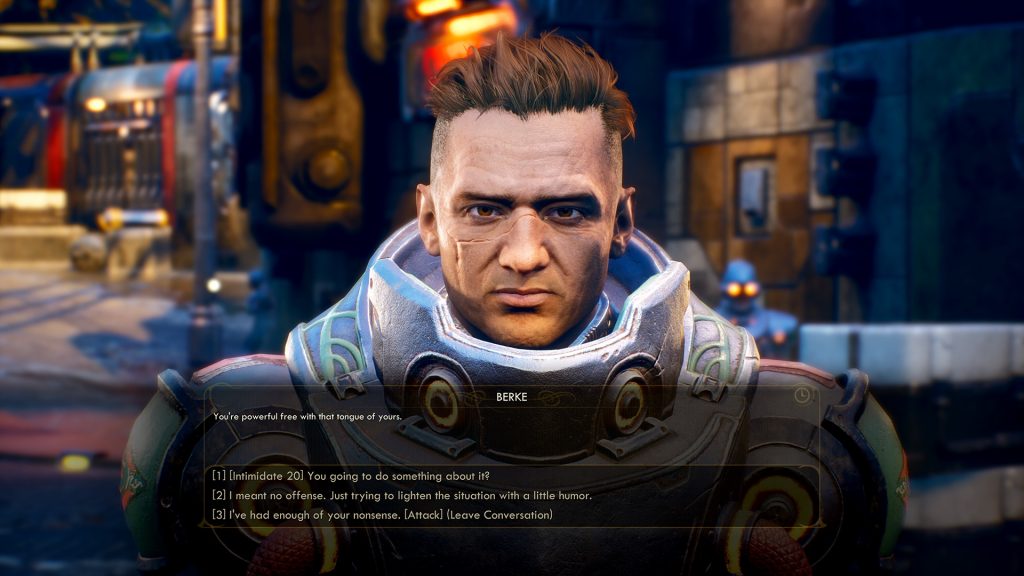
The Board, a collection of corporations that banded together to fund and purchase elements of founding the Halcyon system, has a stranglehold on the colonists’ lives and see Dr. Welles as a threat to their existence. With the player’s given a mission to try and retrieve materials necessary to perhaps revive the rest of the colonists on The Hope they are sent planetside with little choice in the matter and from then on the Halcyon system is at the player’s mercy. Stick true to your mission to save your fellow colonists? Turn into a corporate loving fighter ready to squash out resistance? Simply slaughter everyone in sight?
Those are all viable options and even this is over simplifying things a little as The Outer Worlds does its best to let players have mostly free reign over how exactly they want to try and proceed. While far more structured in nature, players can generally advance through most of the story quests however they please. For example, two seperate groups may be struggling for power but with your own ship needing a vital engine component, one group will need to suffer as a result. Choosing sides will affect the player’s reputation with each faction, which in turn allows for better deals at merchants/vending machines as well as some extra story bits, or simply murdering your way through and taking things off of corpses works just as well.
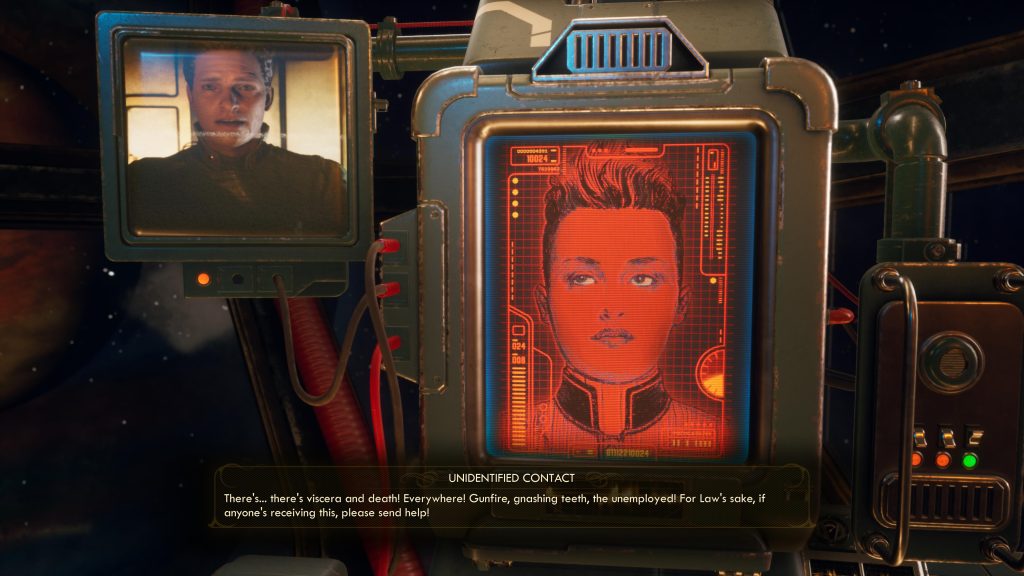
Player choice when it comes to simple dialogue can also play smaller roles in how conversations can later play out. Standard NPCs may begin mentioning The Hope should the player bring it up often enough but this is only the tip of the iceberg as character dialogue in The Outer Worlds is extremely well-written and variable. Almost every named NPC can be interacted with and often they have their own unique little bits of backstory and often missions that the player can take on should they choose. Usually interactions also feature a wide array of skill checks that allow for special dialog if the player can meet them, often unlocking additional info, bonus rewards, or simply skipping a step in a quest line.
The company has also paid special attention when it comes to the various companions that players can recruit and bring with them. These companions, up to two at a time, will chirp in while talking with NPCs to voice their own opinions, talk with one another out in the field while exploring or even make remarks regarding the player’s own choices or the scenes they are witnessing in some quests. Combine that with the fact that most of the companions have their own unique feeling quest lines that reveal more about them and players will really come to enjoy their crew to the point that they will struggle to see just how certain characters will react should a separate choice be made in a separate playthrough or how a different pair may play off one another.
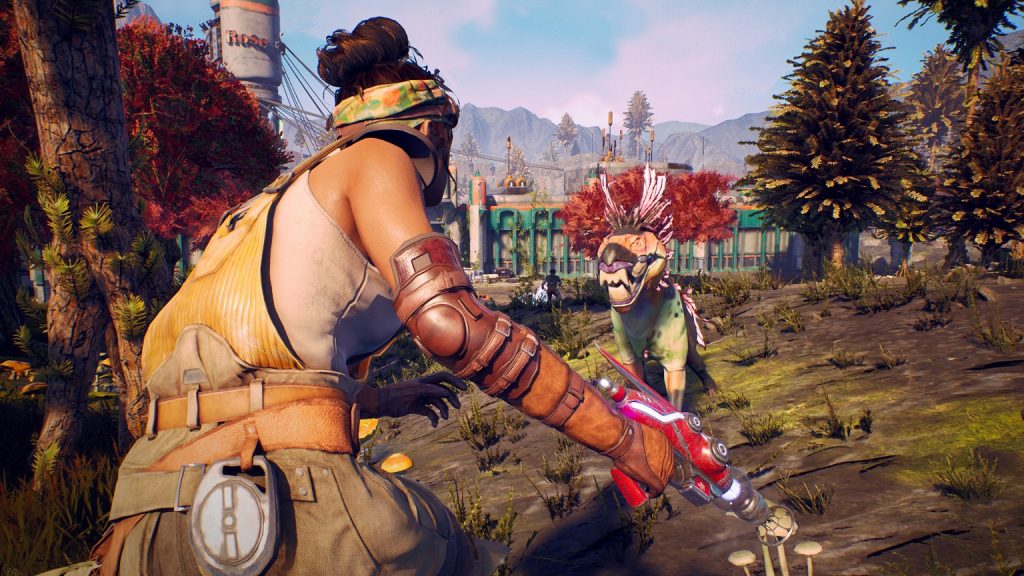
Obsidian Entertainment has put a massive amount of effort into making sure that The Outer Worlds is filled with bits of lore and storyline nearly everywhere you look and takes on an almost morbid tone when tackling a future where corporations control every aspect of life. As bleak as things may be on the surface it only gets darker the further the player digs into certain aspects of these corporations on their adventure and while we won’t spoil anything here, every single planet and place to explore will have examples of corporate greed and the placement of a product or slogan above human life. This dark approach circles back around enough to be quite humorous at times, especially in regards to interactions with other NPCs.
Since the player’s dialogue isn’t spoken aloud the game features some rather outlandish options at times and the NPC reactions are always superb in these cases. With conversations being a great way to establish your own style of character, a mostly well-written group of companions that have far more to them than your standard RPG party, and a wide array of options when it comes to tackling the story players will find that The Outer Worlds‘ approach to storytelling, especially with its unique brand of humor, is something they won’t want to miss.
Gameplay
When building their character players will notice one of the first elements that sets leveling up in The Outer Worlds apart from other similar games. Every level gain provides the player with ten points that can be applied to a standard character stat that raises up to three sub-stats, such as Dialog boosting persuasion, lying, and intimidation, up to 50. At this point players will then need to apply points into these different skills individually and this allows players to play a bit more freely with some of their initial stats before worrying about trying to specialize in a certain category. It also prevents players from being punished for speccing into a certain type of weapon before finding out that they may like something different as firearms all fall under the same category until the 50 mark.
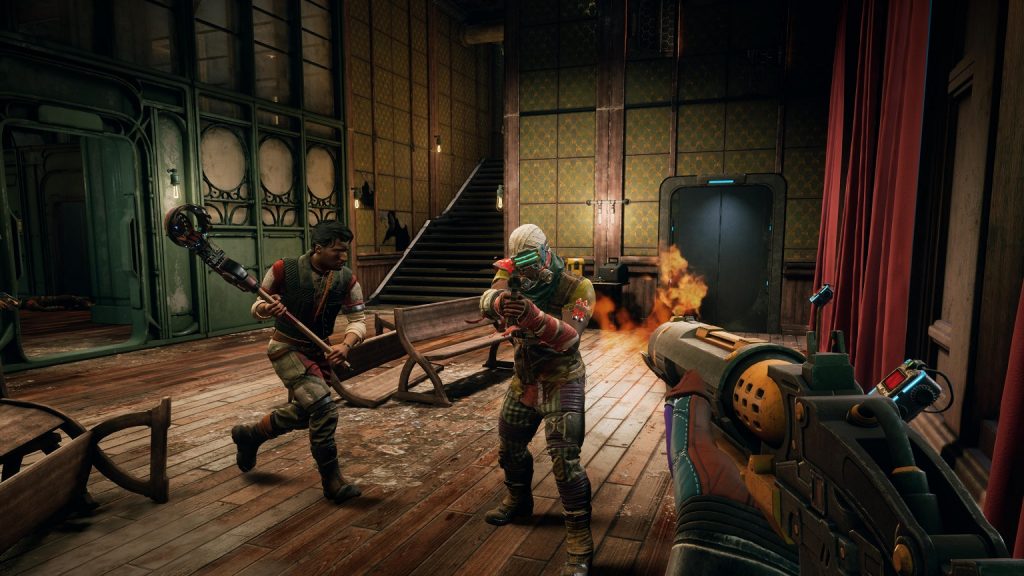
Every other level up provides the player with a perk point that can be used to acquire a perk of their choosing but unfortunately most of these perks are rather bland in nature though they do end up feeling at least a little useful. Perks are rather precious and the game also offers a way to gain extra perk points by accepting various “Flaws” that their player can develop. Flaws are triggered randomly throughout the game and can range from increasing damage from certain elements, a decrease in stats when facing certain enemy types, slower movement speed, and more and usually these Flaws appear in regards to whatever injured the player last. Flaws can be useful at times for perks but players will need to be careful about what they choose to accept as some flaws can be rather damning if built up but thankfully any discovered flaw can be ignored should the player choose.
Playing from an entirely first person perspective (with third person only appearing when left idle) players will find that navigating the game world is a fairly standard experience though it is one that is more structured in nature thanks to the way the game sets itself apart on different worlds with a variety of different maps to explore. While traveling players will encounter a variety of hostile creatures and humans and of course, a fight will break out. Combat works in a fairly basic manner with there being a decent selection of firearms and melee weapons to choose from but the most unique tool the player has on their side is TTD, or Tactical Time Dilation.
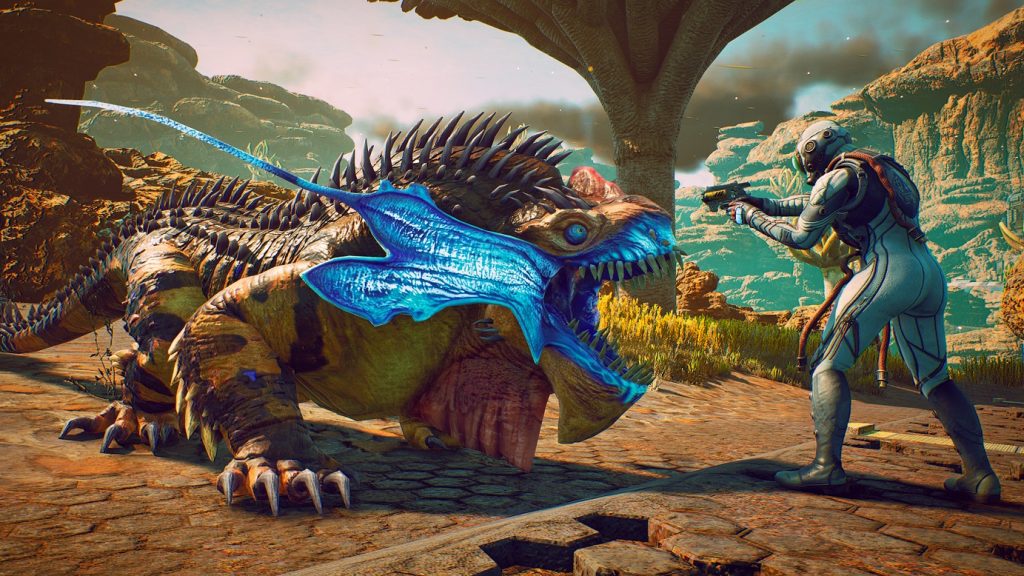
Thanks to their long time in cryosleep the player can trigger TTD to slow down time anytime they wish and take a look around the battlefield, or simply the world if they prefer, and analyze the enemy where they may find weaknesses and target weak points. Shooting or striking certain locations can cause an enemy to be blinded or even fall down and can play a useful role in more difficult encounters. That being said, the difficulty of the game does tend to slide off near the midpoint so players will likely want to try the game on a harder difficulty, not Supernova, if they are looking for a challenge. Supernova is a far more extreme mode that features permanent companion death and a variety of other survival mechanics that players will need to manage to stay alive.
While the variety of weapons that players can wield are a bit lackluster in The Outer Worlds, outside of some real special feeling Science weapons, almost every piece of gear can be modified with various boosts to damage or various stats. Players can even “tinker” with their favorite pieces of gear and raise the amount of damage they dish out and protect at the cost of the in-game currency “bits.” Even companions can provide some bonuses to player stats depending on who the player brings with them, allowing for plenty of character customization without too much limitation.
Visuals & Audio
In many ways The Outer Worlds impresses but also feels a bit like a let down when it comes to presentation. The different worlds and outposts players can explore are varied enough and feel alien in nature, though most of the designs are a bit rough around the edges, especially when it comes to loading in properly. Move too quickly through an area and the game may need to pause and load to proceed or suffer from severe pop-in of objects and, while the game does have a nice little lore reason why houses tend to look similar to one another, things can feel a bit repetitive. The same can be said in regards to the enemies that players encounter as the hostile alien wildlife quickly becomes a common occurrence and both machine and humanoid enemies feature very little variety.
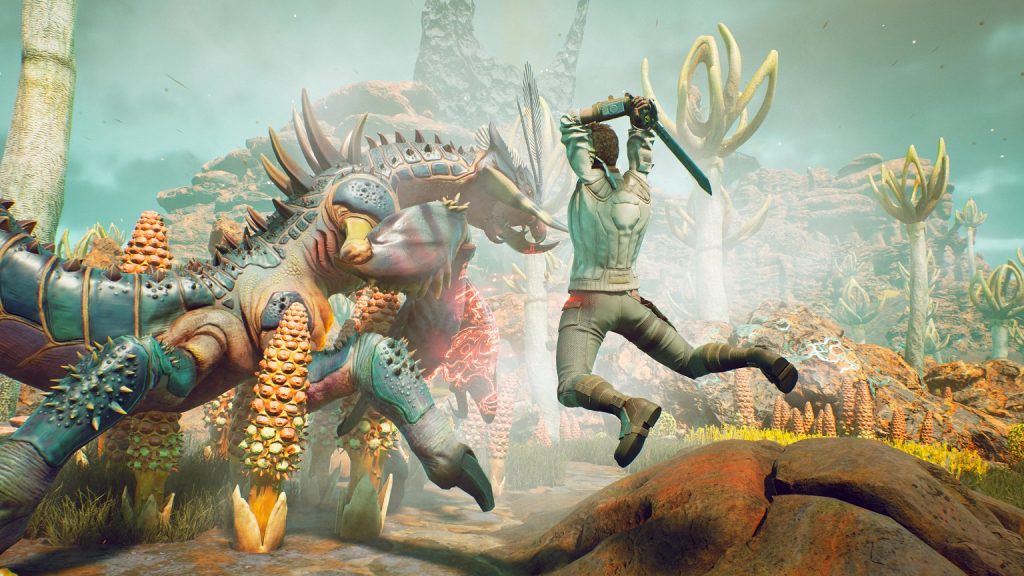
One thing that The Outer Worlds does shine at when it comes to presentation is how well voice acted the game is. Outside of the player character every other character in the game is voiced in some form or another, and the acting for many of these characters are extremely well done. Players can really hear the exhaustion in a character’s voice who has been overworked or the soul-crushed feeling of a retail employee that must run through the same steps with every customer. These performances really help drive home the story as well as help nail the humor at times.
Overall
Although the presentation can be a bit rough at times and the weapons could be a bit more varied, The Outer Worlds proves that Obsidian Entertainment still has everything it takes and more to create an engrossing RPG that players will gladly sink plenty of time into and return for another serving to see just how things change if they played differently. With great quest progression and plenty of steps that can be done differently The Outer Worlds’ brand of stinging humor that tackles a slightly different dystopian future in space is one that we hope may see a sequel in the future or, should that be it, is a great sign of what the company has to offer.
Capsule Computers review guidelines can be found here.


